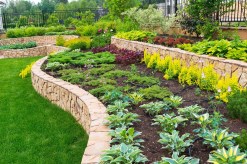The Ultimate Guide to Cultivating Dates Plants at Home
Dates plants, also known as date palms, are not just a staple in Middle Eastern cuisine but can also be an excellent addition to your home garden. These tropical beauties are known for their sweet fruit and tall, graceful stature. If you’re interested in growing your own dates plants at home, this guide will provide you with all the essential information you need to cultivate these magnificent trees successfully.
Understanding Dates Plants
Dates plants belong to the species Phoenix dactylifera and are primarily grown in arid regions where they thrive best. They typically grow to heights of 70-75 feet when fully mature and can live for several decades. The tree produces clusters of sweet fruits that are harvested when they’re ripe. To grow dates successfully at home, it’s essential to understand their growth requirements and optimal conditions.
Choosing the Right Variety
When selecting dates plants for cultivation, you’ll want to choose varieties that best suit your climate and gardening space. Some popular varieties include Medjool, Deglet Noor, and Barhi. Medjool dates are larger and often considered the ‘king’ of dates due to their rich flavor and soft texture. Deglet Noor is known for its chewy texture while Barhi is typically enjoyed fresh because of its softer taste.
Planting Dates Plants
To plant a date palm successfully, begin by choosing a location with plenty of sunlight (at least 8 hours daily) and well-draining soil with good aeration since date palms do not like wet feet. The best time for planting is in spring or early summer when temperatures are warm enough for root development. Dig a hole slightly larger than the root ball of the plant; place it in the center before covering it with soil while ensuring that the crown remains above ground.
Watering and Fertilizing Your Date Palm
Watering is crucial during the first few years after planting until your date palm establishes itself. Young palms require regular watering about twice a week; however, ensure not to overwater as this can lead to root rot. Once established, they become more drought-tolerant but still appreciate occasional deep watering during prolonged dry spells. Fertilizing with a balanced fertilizer every spring will encourage healthy growth throughout its life cycle.
Harvesting Your Dates
Once your date palm matures (usually around 4-8 years), you’ll start seeing fruit clusters developing from spring through early fall depending on your region’s climate conditions. Harvesting dates involves collecting them when they’ve turned brown or golden amber color — usually late summer or early fall — which indicates ripeness. Be cautious using gloves as some varieties have sharp thorns along their fronds.
Growing dates plants at home can be rewarding both aesthetically and nutritionally. With proper care including adequate sunlight, watering practices, fertilization strategies combined with patience—your efforts will surely pay off when you finally pick those deliciously sweet fruits right from your backyard tree.
This text was generated using a large language model, and select text has been reviewed and moderated for purposes such as readability.






